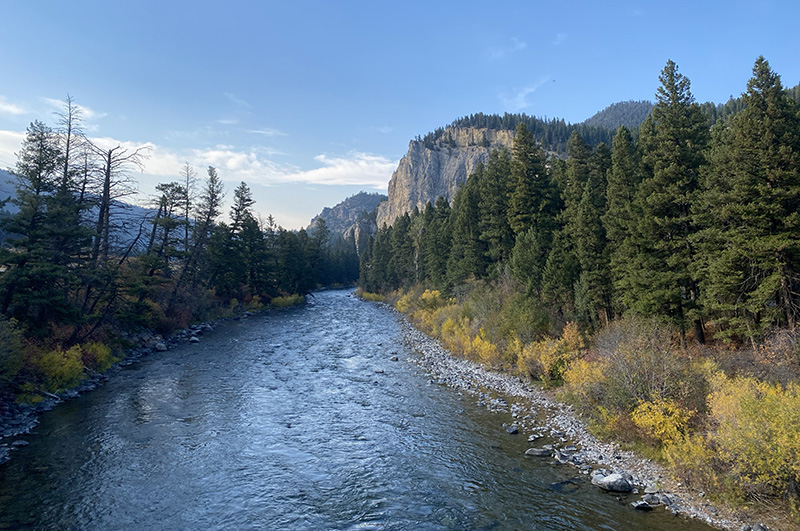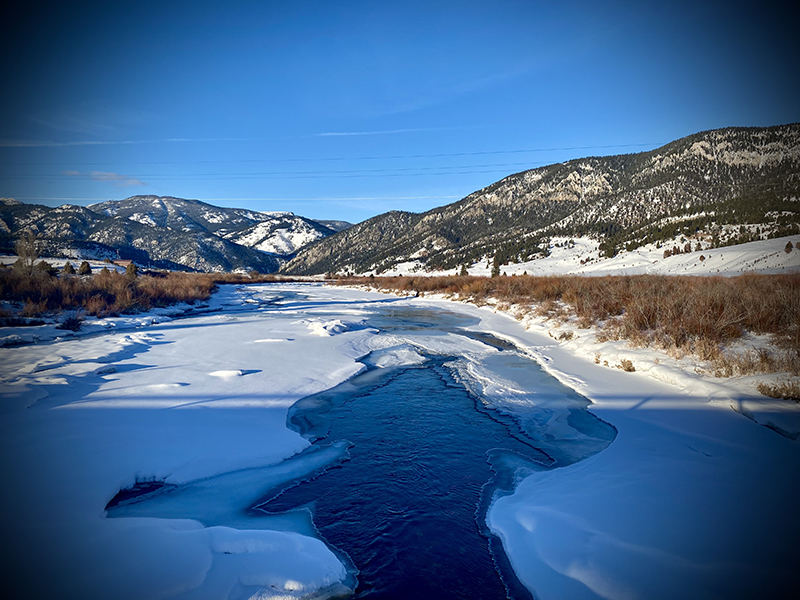Now that some time has passed since the New Year holiday, we’ve had a chance to take stock of the last few months—and we’re thrilled with what we see. After several major victories and important organizational developments, it’s clear the Gallatin River is in good hands and that the Task Force is headed in the right direction.
Wild & Scenic Introduction
In case you missed it, Senator Jon Tester officially introduced the Montana Headwaters Legacy Act just after Thanksgiving. You might have been too busy gorging on leftover turkey—and who can fault you for that—, but this was a major milestone for a decades-long effort that would designate 336 river miles in Montana as Wild & Scenic, including 39 miles of the Gallatin and 18 miles of the Taylor Fork.

The Task Force has been advocating for such designation for over seven years, and we’re proud to see the Gallatin get the recognition it deserves. To learn more and add your endorsement, visit healthyriversmt.org.
Upper Deer Creek Restoration
Just before Halloween, engineers completed restoration work at the Upper Deer Creek access area. Here, at what locals call Baetis Alley, recreational access had degraded vital streamside habitat. In an effort to mitigate that damage, the Task Force has partnered with Trout Unlimited and the Custer Gallatin National Forest to repair damage done and improve future access as visitation increases.
To that end, we built hard-surface boat launches, an ADA-accessible fishing platform, an ADA-accessible trail network, and two hard-surface parking areas. This will concentrate use to sustainable features and keep vehicles from damaging sensitive riparian vegetation that is important to water quality.
Upper Deer Creek is the second such project that we are undertaking in Gallatin Canyon, and next we have our sights set on Porcupine Creek / Beaver Creek.
Learn more about the project or support our habitat restoration and access improvement work.
Gallatin Canyon Water & Sewer District
Development in Gallatin Canyon—roughly the Conoco to Rainbow Ranch—represents a major potential threat to river health. In this area, all homes, lodges, restaurants, and businesses currently get their water from individual or community wells, and treat their wastewater in individual or community septic systems.
While these systems adhere to state standards for quality, they pale in comparison to the treatment standards at the soon-to-be-constructed Big Sky Water and Sewer District facility. Wastewater at the new facility will contain 90% less nitrogen and phosphorous, two pollutants partially responsible for the wide-spread algae blooms we’ve witnessed over the past few summers.
On December 29, when Gallatin County Commissioners approved the new Gallatin Canyon County Water and Sewer District, the Gallatin River was the biggest winner. Now, water and sewer users in the Canyon can potentially connect to the new wastewater treatment facility in Big Sky. This means that hundreds of septic systems can come offline, resulting in a massive reduction in harmful pollutants entering the groundwater and flowing to the Gallatin.
The Task Force has been advocating for such a district for nearly 15 years. While this area is not yet as developed as the West Fork drainage, the potential is significant, and its proximity to the main stem of the river is a major cause for concern. We’re grateful to the Canyon landowners who applied for district formation and look forward to learning more about how this district can support river conservation.

Community Support
When Covid-19 hit in March, like so many others, we were wary of what the future might hold. It was unclear whether our annual fundraising efforts would be possible, and we were sensitive to the new economic situation many of our supporters found themselves in.
As we should have expected, our Friends of the Gallatin proved just how important this river is to them, and our community showed how committed they are to clean water. Most recently, the Big Sky Area Resort Tax District reaffirmed their support, funding several projects vital to watershed health. These projects included stormwater management, habitat restoration, water-quality monitoring, and community education, all areas essential to our work and vital for a healthy Gallatin River. During our end-of-year giving campaign, individuals stepped up like never before to put us on solid financial footing for the coming year.
As always, there is much work to be done, and the river is always in need of your financial support. If you’re interested in monthly giving, become a Friend of the Gallatin—this revenue is crucial for organizational sustainability.

You can also make one-time donations to our Peak Flow Fund, register for a Friend of the Gallatin license plate, or become a business sponsor.
Committed Leadership
In January, the Task Force added three community leaders to our board—Eric Ladd, Linda Meade, and Christine Sundnas. Their commitment to Gallatin River conservation is evident in their willingness to step up and devote precious time and energy to our cause, and we look forward growing through their leadership. Join us in welcoming them!
While 2020 felt like a whirlwind at times, by maintaining our focus on our mission, we were able to achieve several significant milestones that will bring us closer to un-impairing the West Fork tributaries and keeping the Gallatin River healthy. We marked a 20-year anniversary in 2020, an impressive milestone in and of itself. While we’re proud of our accomplishments, we also know that this is truly a new era for the Task Force. Through your help, we have never been better positioned to deliver for the Gallatin.

